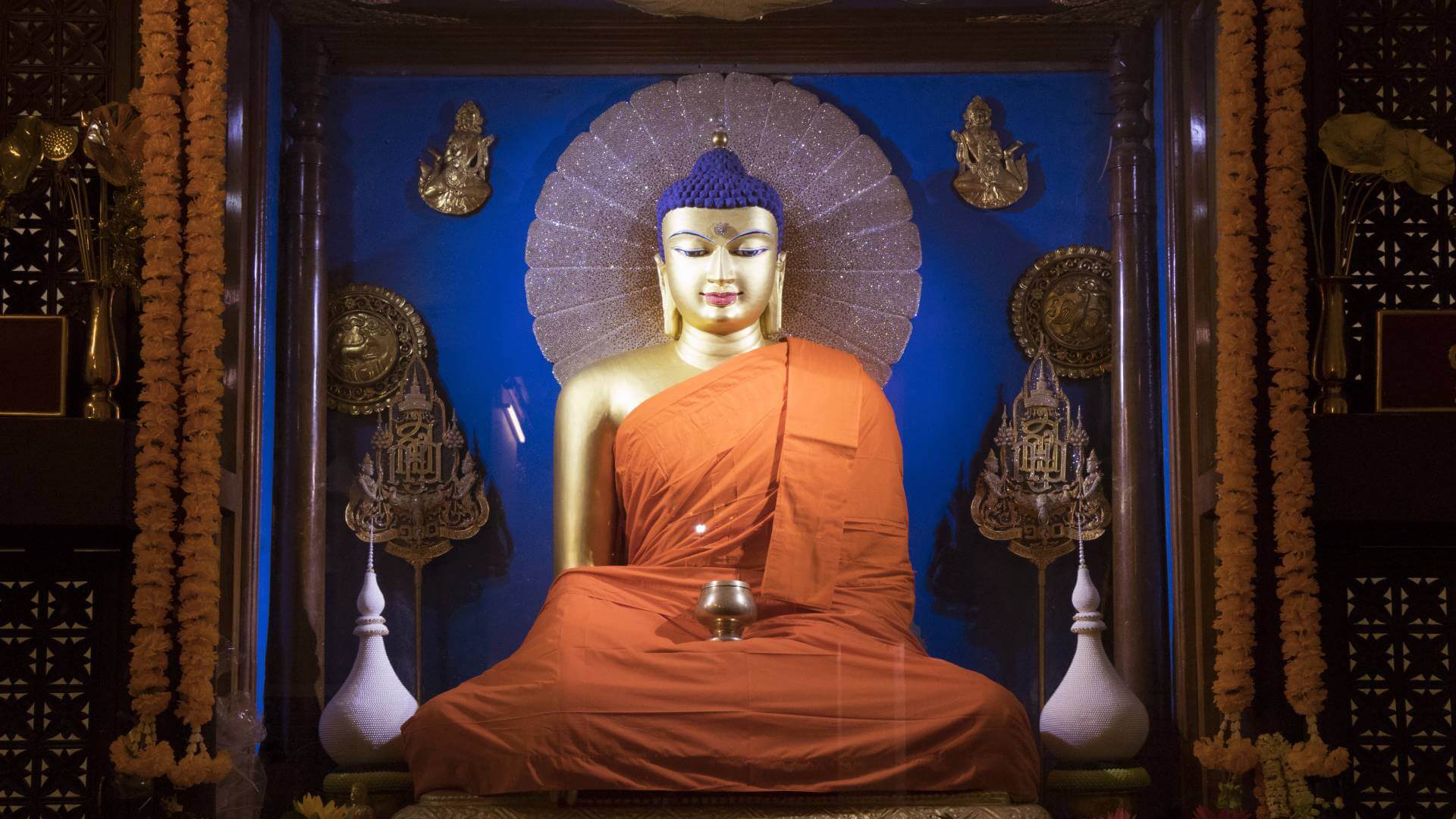Buddhism in India
Buddhism, one of the greatest spiritual traditions in the world, had its origin in India around 2500 years ago. Siddharta Gautama, who is considered the real founder of Buddhism, was born in Lumbini, into the Shakya royal line, which is now part of present-day Nepal. Siddhartha who was Born and raised in the palace of Kapilavastu, was the son of King Suddhodana and Queen Maya. It is believed that before his birth a brahmin had predicted that he would either become a great emperor or a sage. To prevent him from becoming a sage, his father Suddhodana kept him within the walls of the palace and didn't let him see the real world.
Living in abundance, far away from the pains and hardships of this life, he led a life of opulence, completely unaware of the ugly side of existence. But, during the course of his life, when he encountered "Four Sights"- an old man, a sick person, a corpse, and an ascetic. At which point his destiny took a significant turn. He was not at all ready for this experience. Meanwhile His head charioteer Channa revealed the truth in front of him that all beings are subject to sickness, ageing and death. After that he could not rest.
Tormented by such things, Siddhartha left his wife Yasodhara and son Rahula and undertook a quest for spiritual truth. Spending years in contemplation and control of the self, he became the Buddha beneath the Bodhi tree in Bodh Gaya as a result of his realization of nirvana. His teachings began with the foundations of Four Noble Truths and the Eightfold Path to escape the bondage of pain and suffering.
The life story of buddha is divided into five stages based on the major events and turning points of his life. For each event there are five symbols that are used to represent them.
- Lotus and bull symbolize birth (Janam)
- Horse symbolize the great department (Mahabhinishkraman)
- Bodhi tree symbolizes enlightenment (Nirvana)
- Wheel symbolize the first sermon (Dharma Chakra Parivartan)
- Stupa symbolize death (Parinirvana)
The rise of Buddhism in India seemed to have an appeal which appeared universal and challenged the strict norms of society that were typical of those days: it preached equality, compassion, and self-change through meditation and ethical living. After having a conversion into Buddhism, the Emperor Ashoka stimulated the diffusion of Buddhism through stupas, inscriptions, and missions within and outside India. Buddhism contributed significantly toward shaping Indian art, architecture, and philosophy, along with the legacy of peace and compassion. However, it began declining within the nation but has continued to inspire millions across the globe, thus holding the glory of being a treasure of Indian heritage.
History of Buddhism in India
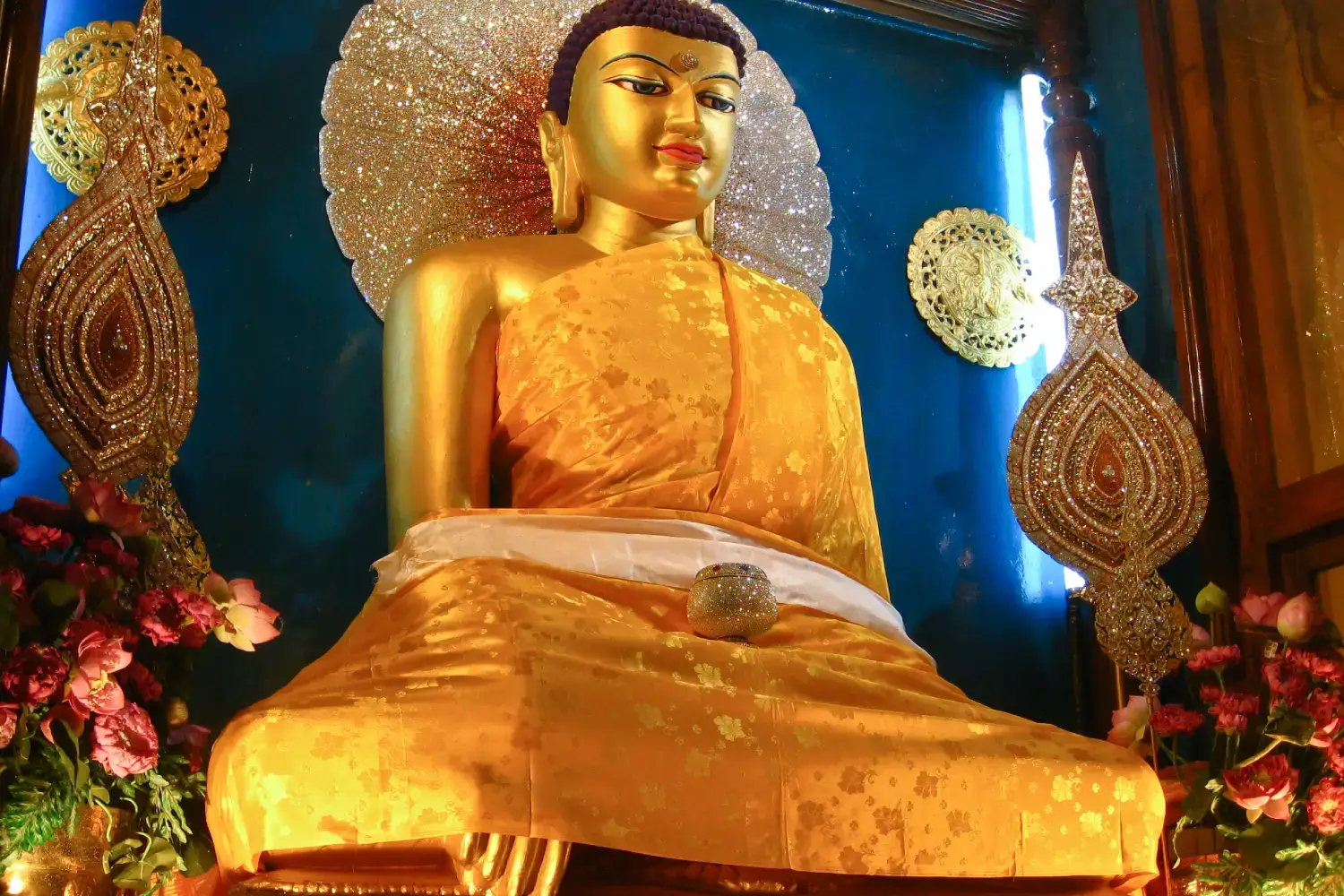
The journey of Buddhism in India began more than 2500 years ago. The history of Buddhism includes remarkable growth and decline as well as periods of revival, all influencing the cultural and philosophical landscape of the entire subcontinent and beyond.
Origin of Buddhism
Buddhism was founded by Siddhartha Gautama, a prince of the Shakya clan, around the 6th-5th century BCE. Rejecting his royal life, in the quest of truth, he got enlightenment below the Bodhi Tree in Bodh Gaya, Bihar. This is considered the milestone of the birth of Buddhism.
After the enlightenment, Gautama Buddha spent about forty years teaching primarily in the Gangetic plains. His doctrine emphasized:
The Four Noble Truths, which define suffering and prescribe a path for its cessation. The Eightfold Path, putting forth practical steps for ethical living, mental discipline, and wisdom.
He established the Sangha, a monastic community, for the keeping and propagation of his teachings. The Sangha proliferated as a vital institution linking the monks and the lay followers to spread Buddhism across regions like Magadha, Kosala, and beyond.
Mauryan Period and The Rise of Buddhism
The Mauryan Empire (321–185 BCE) made a key contribution to the development of Buddhism in India. After a bloody war fought in Kalinga, Ashoka embraced Buddhism and actively promoted it:
Infrastructure: Ashoka erected monumental stupas such as the Great Stupa at Sanchi and also established viharas.
Ashokan Edicts: His inscriptions recorded on the pillars and rocks in Brahmi script delivered pure ethics and ideals of Buddhism to the people of his empire.
Missionary Endeavors: Ashoka dispatched messengers to Sri Lanka, Central Asia, and other sections of the world, ensuring that the message of Buddhism reached very far beyond India.
The reign of Ashoka established Buddhism as the most important religious and political force in ancient India, thus shaping the history of Indian Buddhism.
Division of Schools
As it grew gradually, Buddhism became diversified and thus developed different teachings and schools.
Theravada Buddhism: Theravada focuses on the original teachings of the Buddha, monastic practice, and meditation and has its own followers. It is largely concentrated in Sri Lanka and Southeast Asia.
Mahayana Buddhism: It was created in the 1st century CE, and took a vastly different approach toward itself, one centered around the Bodhisattva concept, that is, to gain enlightenment to benefit others. The tradition spread to China, Korea, and Japan.
Vajrayana Buddhism: Vajrayana evolved on esoteric practice, integrating Mahayana doctrines with tantras. It was well spread in Tibet and in Himalayan regions like Ladakh and Sikkim in India.
With such diversifications, Buddhism is able to respond to different cultures as well as enrich the Buddhist heritage in philosophy and spirituality.
Decline
Numerous reasons are capable of being enumerated as to why Buddhism declined in India.
Resurgence of Hinduism: The Gupta period (4th–6th CE) revived traditional Brahmanism, which put an end to the support given to Buddhism.
Invasions: Buddhism was faced with extinction due to the demolition of monasteries by Huns (5th CE) and later, by Islam in the 12th CE.
Assimilation: Buddhist practices and doctrines were adopted in Hinduism, particularly in Advaita Vedanta and Vaishnavism.
With such diversifications, Buddhism is able to respond to different cultures as well as enrich the Buddhist heritage in philosophy and spirituality.
Revival
Buddhism did not disappear from India entirely; a second rise occurred in the 19th and 20th centuries.
Archaeological Rediscovery: Excavations were carried out, and a revival of interest in Buddhism swept across much of the globe.
Neo-Buddhist Movement: As one of the most critical persons in the independence and in the process of social reform in India, Ambedkar converted to Buddhism in 1956 and launched a mass conversion of Dalits to revitalize this religion for social justice.
Nowadays Buddhism is thriving in India as part of sociocultural tourism, monastic work, and also because of the rising demand for meditation.
Buddhism in Different Regions of India
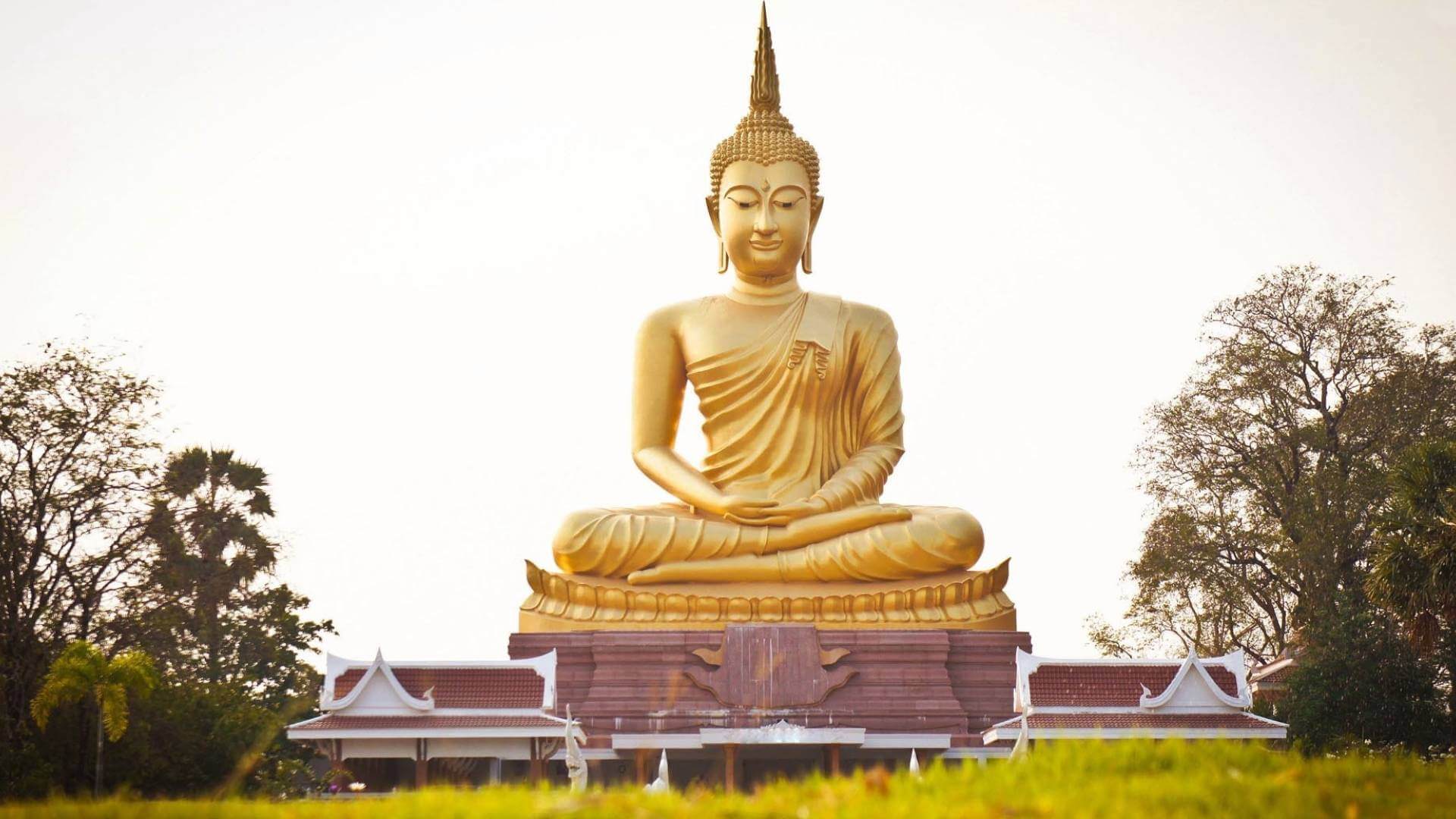
From the peaceful monasteries in the foothills of the Himalayas to ancient stupas, these various regions in India expose one to a range of aspects that could lend a glimpse into how Buddhism rose and spread.
Northern India
Both Uttar Pradesh and Bihar are the heart of Buddhism, and Bodh Gaya is one of the most important places of Buddhist pilgrimage of India for the Buddhist population in India and around the world, because Siddhartha achieved enlightenment here under the Bodhi tree in Bihar. The Mahabodhi Temple, a UNESCO World Heritage Site, is the epitome of religious enlightenment. Around the corner, in Uttar Pradesh, the place where Buddha's first sermon took place is Sarnath, where he put the "Wheel of Dharma" into motion, also known as “Dharmachakra”. Which is the most important and widely used Buddhist Symbol, which represents the teaching and lessons of the Buddha. There are often three swirls in the center of the dharma wheel which depicts the Buddha, the dharma and the sangha. These destinations confirm northern India’s place in the Buddhist tourism circuit.
Eastern India
Treasures of the Buddhist heritage in eastern India are mainly found in West Bengal and Odisha. Ratnagiri, Lalitgiri, and Udayagiri complexes in Odisha are such treasure houses of historical Buddhist monasteries, stupas, and sculptures. They are enclosed by the undulating hills of the countryside, representing a close bond with the Mahayana and Vajrayana teachings.
Western India
In Maharashtra, the Ajanta and Ellora caves are classic examples of beautiful rock-cut Buddhist monasteries and Buddhist temples, beautiful in frescoes and sculptures, all dating back to the Gupta and Vakataka periods. These masterpieces provide the peak of Buddhist art and architecture in India.
Southern India
Buddhism has very little to its credit in southern India. The ancient Amaravati Stupa of Andhra Pradesh is still a reminder of this, as once it was an eminent seat of Buddhist learning and art. The Nagapattinam site of Tamil Nadu and the Buddhist ruins of Karnataka speak for themselves as testimony to the spread of this religion into the South.
Himalayan Region
The regions of the Himalayas, such as Ladakh, Himachal Pradesh, Arunachal Pradesh, and Sikkim, are living Buddhist traditions with rich monasteries such as Hemis, Tawang, and Rumtek. They organize exciting festivals and possess ancient scriptures in their monastery premises, which primarily serve as the spiritual centers of Tibetan Buddhism. The breathtaking landscapes further add to the spiritual ambience that surrounds these places.
Influence of Buddhism on Indian Culture
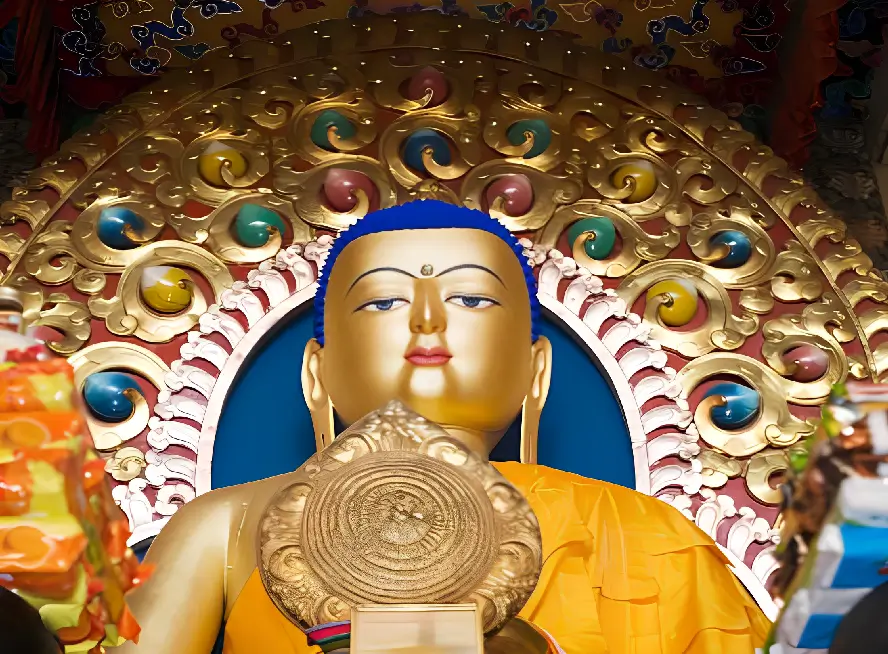
The great impact of Buddhism on Indian culture is seen in numerous ways. One of its profound gifts to the nation was ahimsa (non-violence), which ultimately became one of the very few core values of the nation. Buddhism also left its indelible stamp on Indian art and architecture, which is demonstrated through stupas at Sanchi, Bharhut, and Gaya.
Buddhism also played a pivotal role in the upliftment of education through the establishment of world-renowned residential universities like Taxila, Nalanda, and Vikramasila. It taught and spread Pali as well as several regional languages through its teachings. It has further extended far beyond India and is known as one of the major means through which Indian culture spread across Asia.
Popular Buddhist Sites, Temples, and Monasteries in India
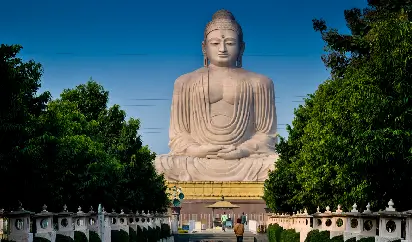
There are some of the most popular Buddhist destinations in India rich with history, culture, and spirituality. From quiet monasteries high on the slopes of the Himalayas to magnificent stupas glorifying the stories of enlightenment, such sacred sites draw travellers and seekers of enlightenment around the world. Here’s a journey through the most popular Buddhist places in India.
Bodh Gaya, Bihar
It is a UNESCO World Heritage Site where Prince Siddhartha attained enlightenment under the Bodhi Tree and became Gautama Buddha. In this place, the most significant attraction is the Mahabodhi Temple with its serene atmosphere and artistic architecture. It is one of the most important Buddhist pilgrimage places in India. People pilgrimage here to meditate and chant while basking in the enlightenment aura.
Sarnath, Uttar Pradesh
At Sarnath, the Buddha delivered his first sermon after enlightenment, thus transforming the place into a pivotal point in Buddhist history. Situated in a peaceful deer park, this place is one of the four most sacred Buddhist sites in India. Dhamekh Stupa and Chaukhandi Stupa are among the many historical and spiritual treasures that this landmark has to offer.
Kushinagar, Uttar Pradesh
Buddha at the age of 81 expired through Mahaparinirvana in this city. Thus, this place shows deep rooting in Buddhism. Here, Buddha gave the final teaching: "All things must pass; decay is inherent in all things." The main attractions include the Rambhar Stupa, which is supposed to mark the Buddha's cremation site, and the Mahaparinirvana Temple, which contains the famous reclining Buddha statue. The town also has several stupas, shrines, temples, and a museum that talk about his legacy.
Tawang Monastery, Arunachal Pradesh
Perched on the highlands of Arunachal Pradesh, Tawang Monastery is the largest monastery in India and one of the significant hubs for Buddhist spirituality and learning. It is associated with the local saying Galden Namgey Lhatse, which means "celestial paradise in a clear night." Justifying the expression, it stands amidst grandeur and serenity. With a huge repository of sacred texts within its fold, cultural cornerstone, and center for Buddhist-Indian Cultural Studies to nurture young monks, it serves further purposes.
Sanchi, Madhya Pradesh
Another one of the most ancient and sacred Buddhist sites in the land, Sanchi, is known for the Great Stupa, which Emperor Ashoka commissioned. This stone monument is built over the relics of Buddha, and it is adorned with carving works on its gates and entrances. The area has many more pillars, temples, sculptures, and monasteries, making it one of the most popular Buddhist pilgrimage sites in India. Its historical and cultural significance is further enhanced by Sanchi University of Buddhist-Indic Studies.
Rumtek Monastery, Sikkim
Rumtek Monastery is located 23 kilometers away from Gangtok and rests on a hilltop. This world-class precious gem was originally referred to as the Dharma Chakra Centre because it is of the Kagyu sect under the age of Tibetan Buddhism of the 12th century. It offers a wonderful view of Gangtok while serving as a spiritual center for realizing oneself. Its marvelous architecture makes it one of the most beautiful monasteries in the world.
Rajgir, Bihar
Rajgir, a favorite retreat of Buddha, features pivotal teachings, such as the Lotus Sutra and the Prajnaparamita. The first Buddhist council was held at Saptaparni Cave, and all the notable sermons were made at Gridhakuta Hill. The Shanti Stupa provides spiritual beauty to this place with its bright, sparkling white structure and four golden Buddha statues.
Ajanta Caves, Maharashtra
The Ajanta Caves form a cluster of some 30 rock-cut structures ranging from the 2nd century BCE until the 7th century CE, which testify to the excellence of Buddhist art and storytelling. These were built to serve as 'Chaityagrihas' (prayer Hall) and 'Viharas' (an abode of monks). Fabulously carved and painted scenes of tales from the Jatakas and the life of Buddha fill these caves. This UNESCO World Heritage site is a glimpse into ancient Buddhist culture and architecture. It is one of the must-visit Buddhist heritage sites in India.
Nalanda, Bihar
Nalanda, a UNESCO World Heritage site, is the site of ancient Buddhist learning and one of the earliest colleges ever to exist. Dating back to the 5th A.D., it has remained a fountain of learning and spirituality flourishing across Asia. Among the ruins are stupas, temples, monasteries, and lecture halls. All these remain compelling testimonies of artistry and architectural brilliance. It is famous for its association with Buddha and Mahavira and carries the spirit of the Indian golden age of education and Buddhist philosophy.
Hemis Monastery, Ladakh
Hemis Monastery is the largest and richest monastery, situated in the peaceful hills of Ladakh. It was founded in the 17th century in the Drukpa school of Tibetan Buddhism. It is famous for its annual Hemis Festival that is marked with brilliant masked dances to celebrate the birth of Guru Padmasambhava. Hemis is more than a repository of rare statues, old thangkas, and a stock of holy scriptures; it offers a spiritual experience amidst the beautiful great Himalayas.
Popular Buddhist Festivals in India
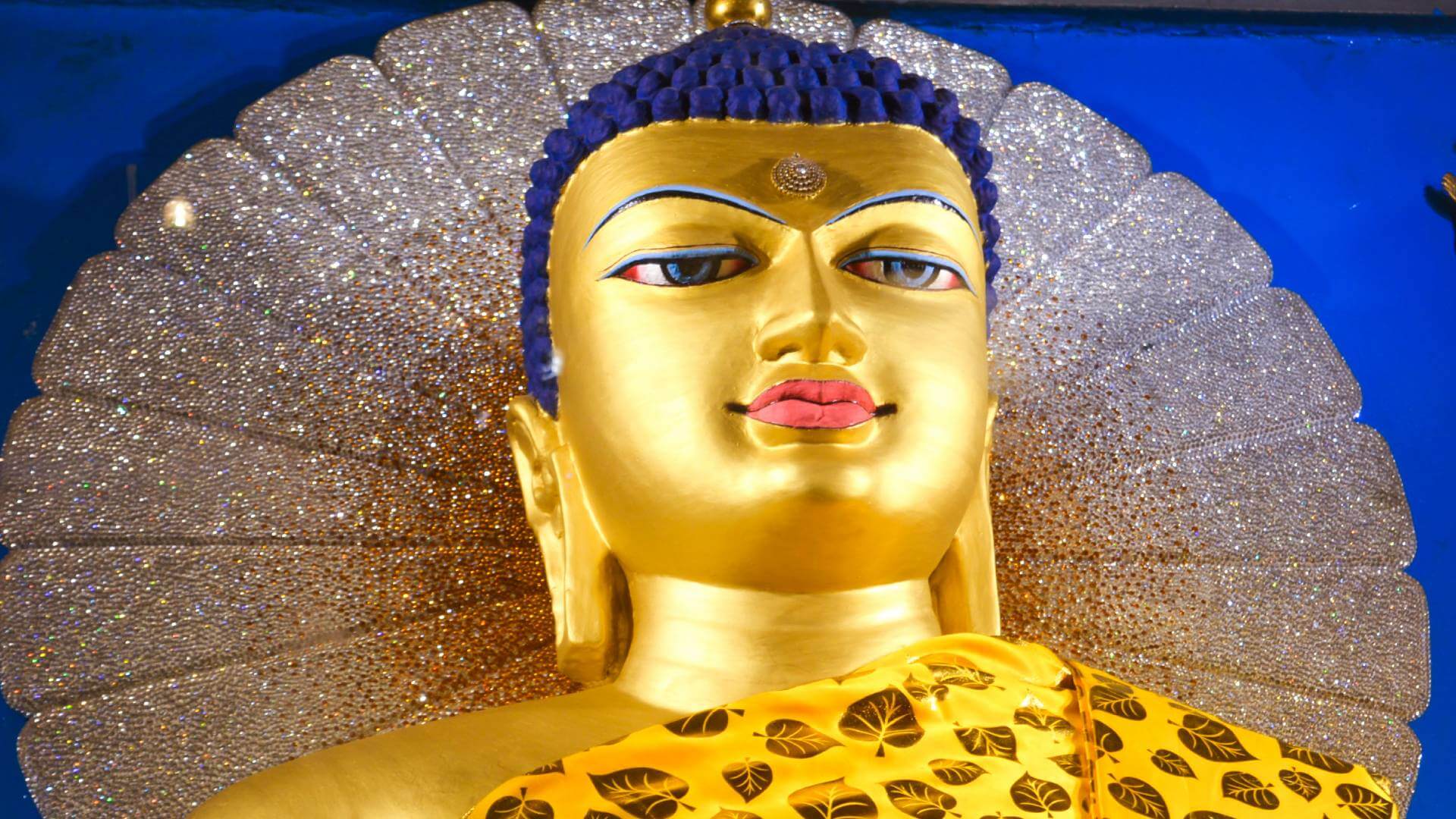
India is blessed with a plethora of festivals that portray the teachings and legacy of Siddhartha Gautama, the Buddha. These festivals are not just religious but also cultural spectacles, full of life and meaning for devotees and tourists alike. Here are some of the most important Buddhist festivals that are celebrated in India:
Buddha Purnima (Vesak)
It is a very important Buddhist festival commemorating the birth, enlightenment (Nirvana), and passing (Mahaparinirvana) of the Buddha. This celebration usually takes place on the full moon day of the month Vaishakha (April-May). On this day, people come together at the shrines such as Bodh Gaya, Sarnath, Kushinagar, etc., to offer prayers, perform meditation with flowers and candles, carry on discussion, or hold a procession on Buddhist teachings.
Hemis Festival
The Hemis festival is celebrated on the 10th day of the Tibetan lunar month Tse-Chu every year at the Hemis Monastery in Ladakh. This festival lasts for two days and is observed to celebrate the birth of Guru Padmasambhava and portray the spiritual and cultural inheritance of the Drukpa Lineage. The great display of the sacred Thangka of the monastery, which is said to carry the blessings of fortune and spiritual well-being, is one of its attractions. Traditional masked dances called chaam are performed by the monks. Ladakh is colorfully decorated, and people garb themselves in traditional attire that makes it even more colorful and merry.
The Asalha Puja Day
Asalha Puja Day, or Dharma Day, is dedicated to the event when Lord Gautam Buddha preached the first sermon to five disciples in the Deer Park in Sarnath near Varanasi. The day is observed on the full moon of the eighth lunar month, which corresponds to July in most cases. It is an important spiritual day when people meditate to understand Buddha's teachings. They read mantras and decorate monasteries with lamps and bright lights. The occasion also emphasizes the importance of wisdom and the extension of Dharma into the Buddhist tradition.
Losar Festival
Celebrated in many places of India, it is the celebration of the New Year that happens in all parts of Tibet. Losar festival is celebrated mostly during February-March, with folk dances and songs to ward off evil and bless the year to come. All monasteries are lit and bright, making it a best time to visit this Buddhist site.
Ullambana
It is considered a sacred Buddhist festival, symbolizing filial piety and compassion. This celebration falls in the seventh lunar month and concerns honoring the ancestors to help free them from suffering. The devotee partakes in a series of rites, prayers, and generous offerings to the monks. This day manifests as a practice of gratitude, love, and the deep Buddhist value that all beings should be freed from suffering.
Buddhism and Meditation Practices in India
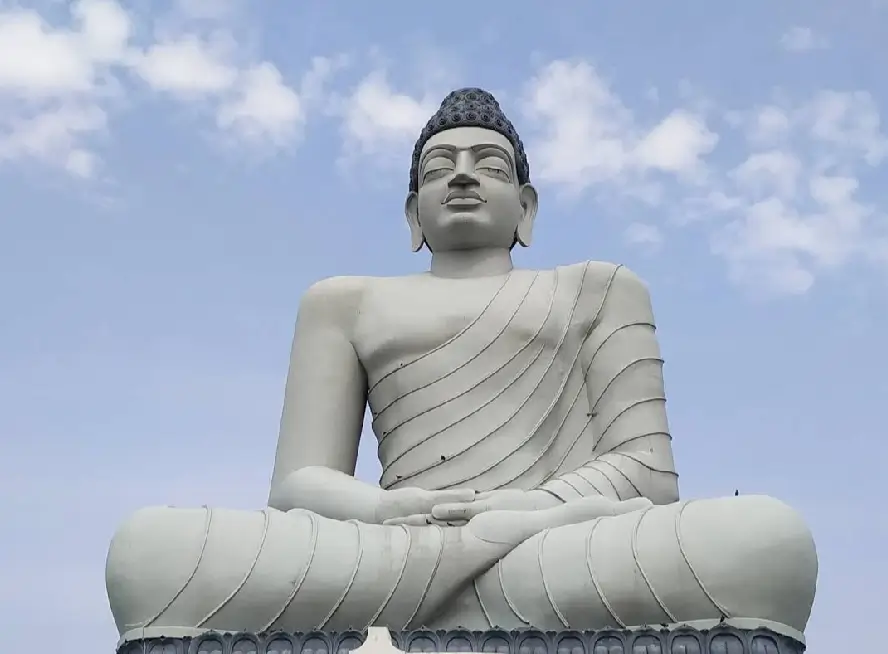
Meditation has been an integral part of Buddhism since its inception in India. It is a tool for spiritual growth through mindfulness and enlightenment. Meditation is based on Siddhartha Gautama’s (the Buddha’s) teachings on understanding the mind and reality and to alleviate suffering. This is practiced widely in modern India and is open to spiritual seekers from all over the world. Some of the major Buddhist meditation practices in India:
Vipassana
Vipassana is one of the oldest forms of Buddhist meditation. It trains the mind to gain insight and understanding with regards to the reality's very impermanent, unsatisfactory, and non-self-nature. This technique is based on observing sensations, thoughts, and emotions without having attachment, as popularized by modern centers like the Vipassana Meditation Center in Igatpuri, Maharashtra.
Samantha
The practice of calm-abiding is intended to develop a purely mental concentration and calmness by meditation on one single object, like the breath of the body; by that, a person stabilizes the mind and prepares for some deeper insights and practices.
Metta
This meditation is practiced with the intention of planting the seeds of compassion and goodwill in one's heart and sending wishes of love and kindness directed toward oneself, to loved ones, to strangers, and even to those whom one dislikes.
Zazen
Zazen is a kind of seated meditation that is characteristic of Zen Buddhism, which emphasizes being mindful and being present. The person works by adjusting their posture and paying particular attention to their breathing as a way to cultivate their capacity for insight and spiritual clarity.
About 2500 years ago, Buddhism sprouted in India and stamped a quite strong imprint on the spiritual, cultural, and historical face of the nation. Its universal teaching of equality, compassion, and liberation from suffering contributed a lot to Indian art, architecture, and education. Although Buddhism faced a decline in India because of socio-political changes, it remains strongly associated with sites like Bodh Gaya, Sarnath, and Nalanda. The religion continues to inspire millions all around the globe while staying alive through the practice of meditation, colorful festivals, and mountain monasteries. Today, this religion forms an essential part of India's inheritance, representing peace and wisdom in the quest of humanity for enlightenment.
Whether an individual wants to get enlightenment, become more knowledgeable about history, or just spend some time away from the hustle and bustle of life, Buddhist tourism in India offers the best spiritual experience. On these lands, the people, and the ancient wisdom of these lands converge to show you the path of self-discovery and inner peace.
You May Also Like to Read
- Buddhist Circuit Tour Odisha
- Best Places to Visit in Buddha Circuit Tour Uttar Pradesh
- Bihar Buddhist Circuit Tour- 5 Best Places to Visit
- Best Buddhist Places to Visit in North East India
- 10 Best Buddhist Temples to Visit in World
- Popular Buddhist Festivals in India
- Top Buddhist Destinations in India
- Popular Monasteries in India
- Top Buddhist Tourism Places to Visit in Madhya Pradesh
- Top Buddhist Tourist Places in Gujarat
- Popular Stupas in India
- Nepal Buddha Tour- Best Places to Visit
- Best Buddhist Places to Visit in Himachal Pradesh
- Odisha Buddhist Circuit Tour Places
